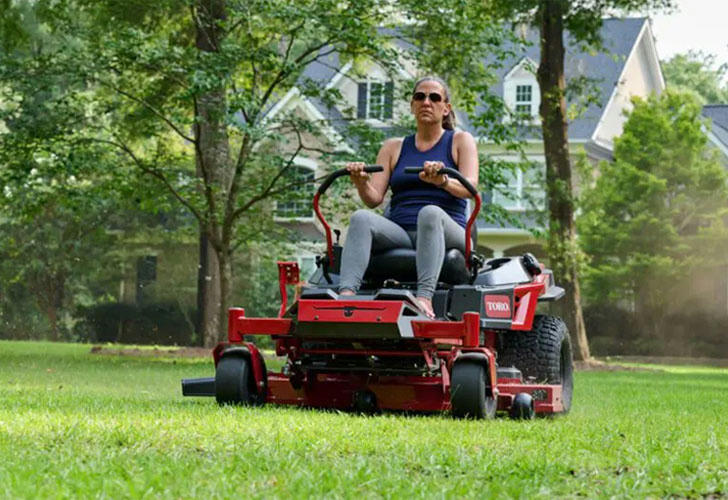What a bargain! I got this machine for $400! How to Buy a Used Brand-Name Lawn Mower?
A lush, well-maintained lawn is a point of pride for homeowners, but achieving it doesn’t have to break the bank. While new lawn mowers offer cutting-edge features, buying a used brand-name model—like John Deere, Honda, or Toro—can save you up to 50-70% off retail prices without sacrificing quality. However, navigating the secondhand market requires knowledge to avoid costly mistakes. This guide walks you through the step-by-step process of purchasing a used mower, compares new vs. used costs, and explains how to manage repairs and maintenance for long-term value.

Step 1: Understand Your Needs & Budget
Before diving into listings, clarify your requirements:
Lawn Size: Small yards (under 0.5 acres) may only need a push mower, while larger properties require riding or zero-turn models.
Terrain: Slopes, obstacles, or uneven ground influence the type of mower (e.g., rear-wheel drive for hills).
Power Source: Gas, electric, or battery-powered? Gas offers more power, but electric models are quieter and eco-friendly.
Budget: Set a realistic range, including potential repair costs (typically 10–20% of the purchase price for used mowers).
New vs. Used Price Comparison:
| Mower Type | Average New Price | Average Used Price |
|---|---|---|
| Push Mower (Gas) | $250–$500 | $80–$200 |
| Riding Mower | $1,500–$4,000 | $600–$1,800 |
| Zero-Turn Mower | $3,000–$8,000 | $1,200–$3,500 |
Example: A used John Deere S120 riding mower retails for $1,200–$1,800 (vs. $2,500 new).
Step 2: Research Reliable Brands & Models
Stick to trusted brands known for durability and parts availability:
John Deere: Renowned for rugged construction and long lifespans.
Honda: Gas engines praised for reliability and low emissions.
Toro: Versatile models with strong dealer support.
Cub Cadet: Affordable yet durable options for residential use.
Avoid: Off-brand or discontinued models with scarce replacement parts.
Step 3: Where to Buy a Used Mower
1. Online Marketplaces
Facebook Marketplace: Local deals, easy communication, and price negotiation.
Craigslist: Wide selection but higher risk of scams—meet in public spaces.
eBay: Offers buyer protection but shipping costs may apply.
2. Dealerships
Many John Deere or Toro dealers sell certified pre-owned mowers with warranties (e.g., 90-day coverage).
3. Equipment Auctions
Farm or estate auctions can yield steep discounts, but inspect items beforehand.
4. Local Classifieds & Community Boards
Check newspapers or bulletin boards for retirees downsizing or families upgrading.
Step 4: Inspect the Mower Like a Pro
Pre-Visit Checklist:
Ask for maintenance records, hours of use (for riding mowers), and reason for selling.
Verify the model year and original purchase date.
In-Person Inspection:
Engine:
Start the mower cold. A smooth start indicates good compression and fuel systems.
Listen for knocking, excessive smoke, or irregular idling.
Blades & Deck:
Check for bent blades, rust, or cracks in the cutting deck.
Spin the blades manually—grinding noises suggest worn bearings.
Transmission (Riding Mowers):
- Test drive: Ensure it shifts smoothly and doesn’t slip on inclines.
Tires & Wheels:
- Look for dry rot, leaks, or uneven wear.
Battery & Wiring (Electric Models):
- Test battery life and inspect frayed wires.
Red Flags:
Seller refuses a test run.
Oil leaks or milky fluid (sign of water contamination).
Excessive corrosion or DIY repairs.
Step 5: Negotiate & Close the Deal
Pricing Tips:
Use Kelley Blue Book or Sold eBay listings to gauge fair market value.
Factor in immediate repair costs (e.g., $50 for a new blade, $200 for a carburetor rebuild).
Negotiation Script:
“I noticed the deck has some rust, and the blades need sharpening. Would you consider $XXX?”
Payment: Use secure methods like PayPal Goods & Services for online purchases.
Step 6: Post-Purchase Maintenance & Repairs
Immediate Actions:
Replace air filters, spark plugs, and oil.
Sharpen or replace blades for a clean cut.
Long-Term Care:
Gas Models: Stabilize fuel in winter; clean the carburetor annually.
Electric Models: Store batteries indoors; avoid full discharges.
Riding Mowers: Grease fittings and check tire pressure monthly.
Common Repairs & Costs:
Blade Replacement: $15–$50.
Carburetor Cleaning: $75–$150.
Transmission Fluid Change: $100–$200.
Deck Welding (Cracks): $150–$300.
DIY vs. Professional Help: Simple tasks like oil changes can save money, but complex repairs (e.g., engine rebuilds) are best left to technicians.
Pros & Cons of Buying Used
Advantages:
Cost Savings: Slash upfront costs by 50% or more.
Slower Depreciation: Used mowers hold value better.
Eco-Friendly: Reduces waste by extending a machine’s lifespan.
Drawbacks:
Hidden Issues: No warranty coverage for most private sales.
Time Investment: Research and inspections require effort.
Limited Features: Older models lack newer tech (e.g., smart connectivity).
When to Buy New Instead
Consider a new mower if:
You prioritize warranty coverage (e.g., John Deere’s 2–4 year warranties).
Your property demands the latest efficiency tech (e.g., automatic height adjustment).
You lack mechanical skills to handle repairs.
Conclusion:
Smart Savings Start with Knowledge
Buying a used brand-name lawn mower is a savvy way to achieve professional-grade results without the premium price tag. By researching models, inspecting thoroughly, and budgeting for maintenance, you can secure a reliable machine that serves you for years. While new mowers offer peace of mind, the $1,000–$5,000 savings from buying used—combined with smart upkeep—make it a winning choice for budget-conscious homeowners.
Ready to upgrade your lawn care? Armed with this guide, you’re now equipped to hunt for hidden gems in the secondhand market!
